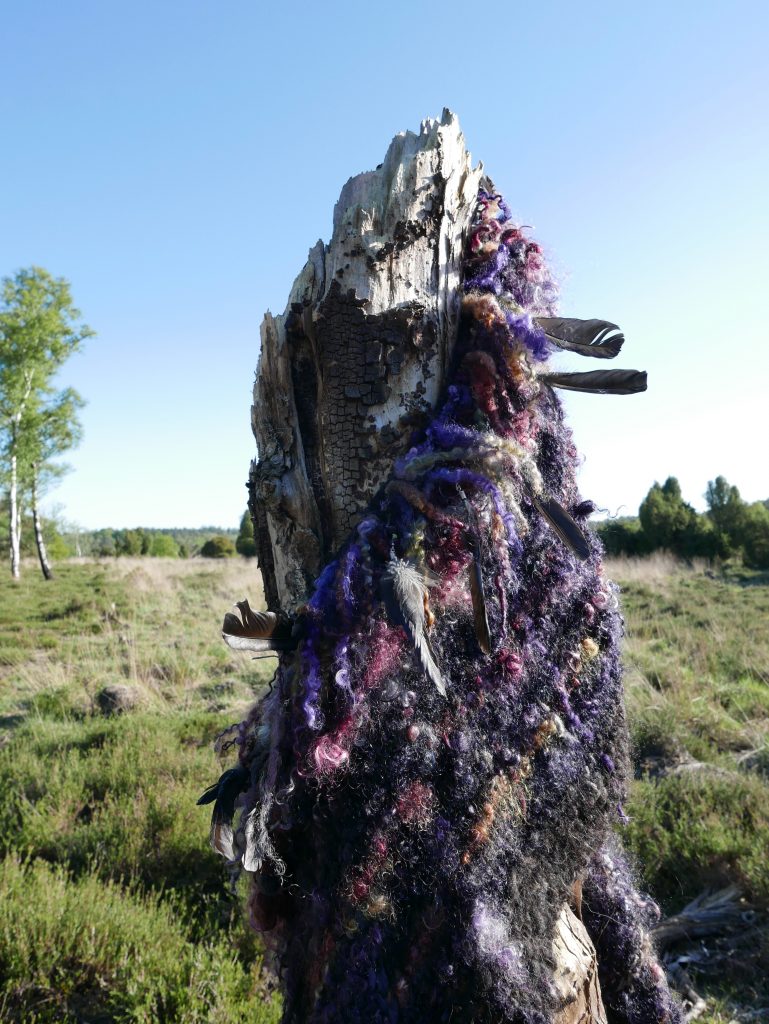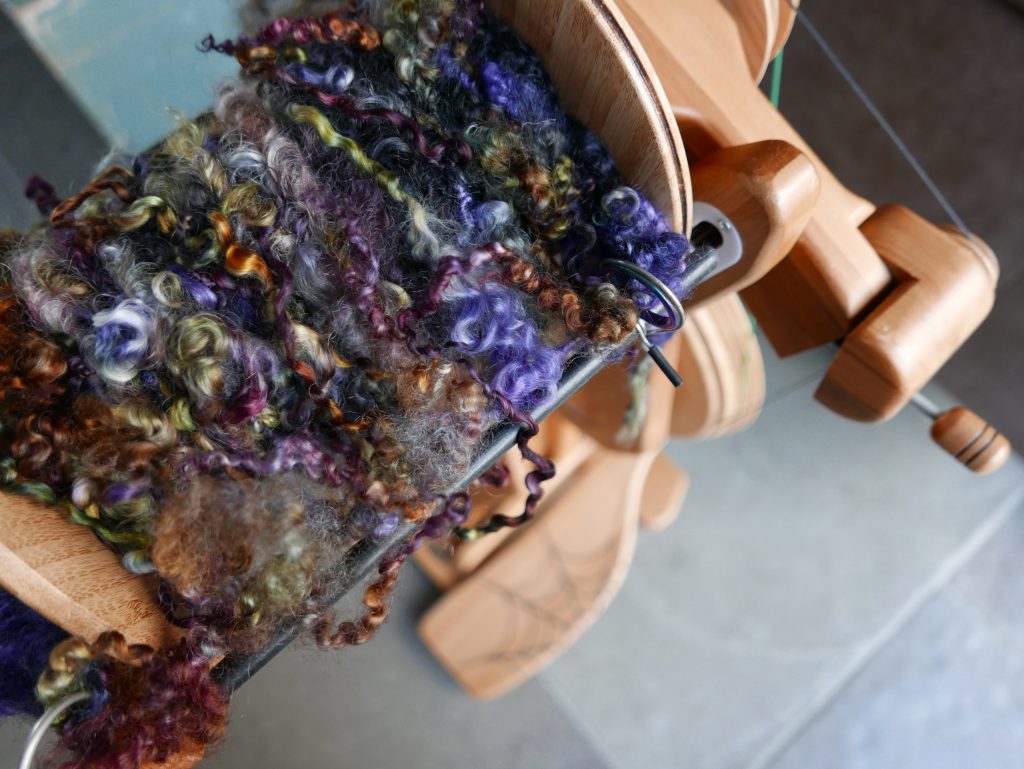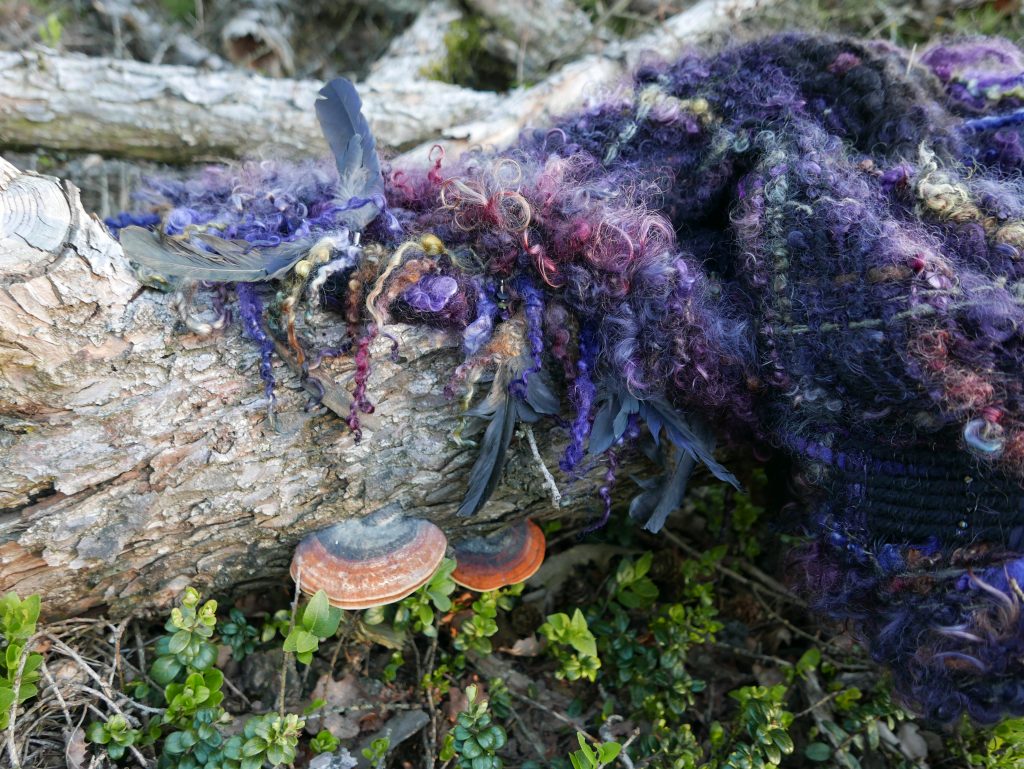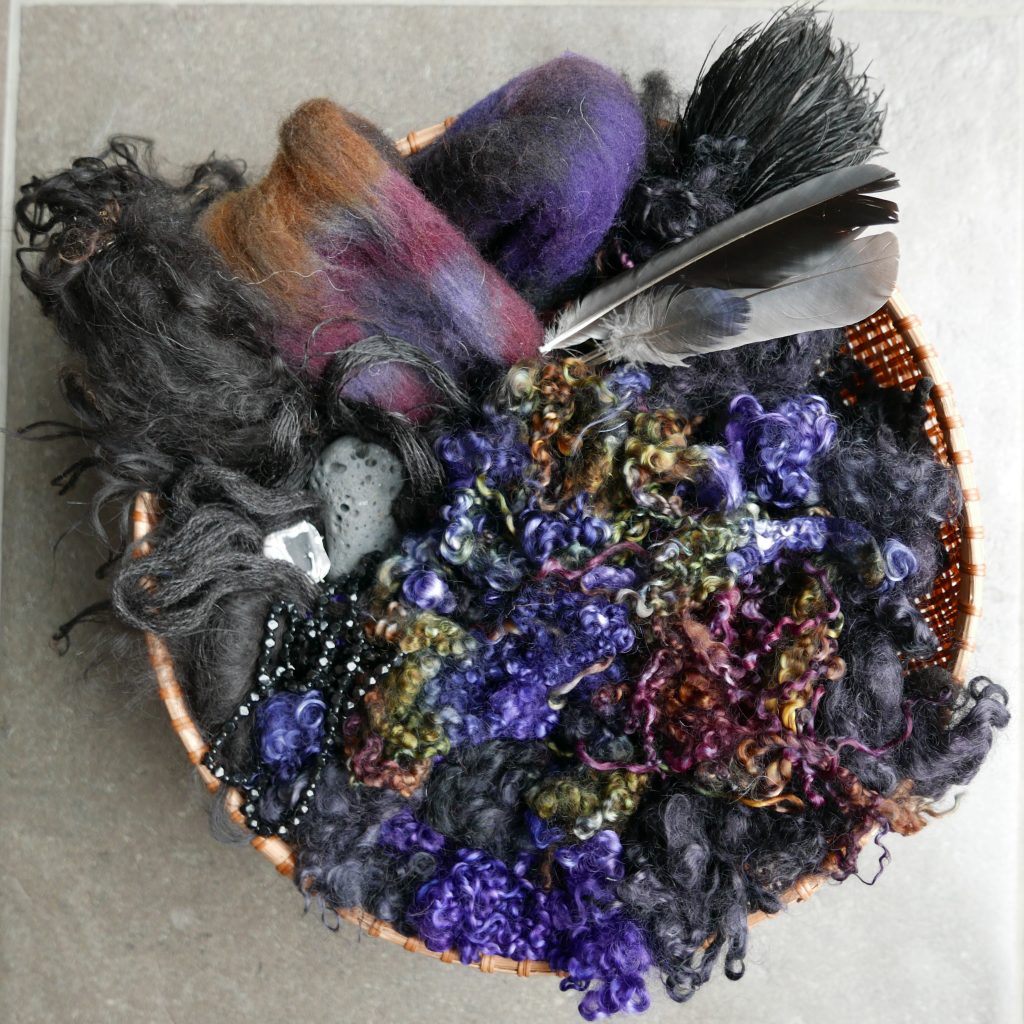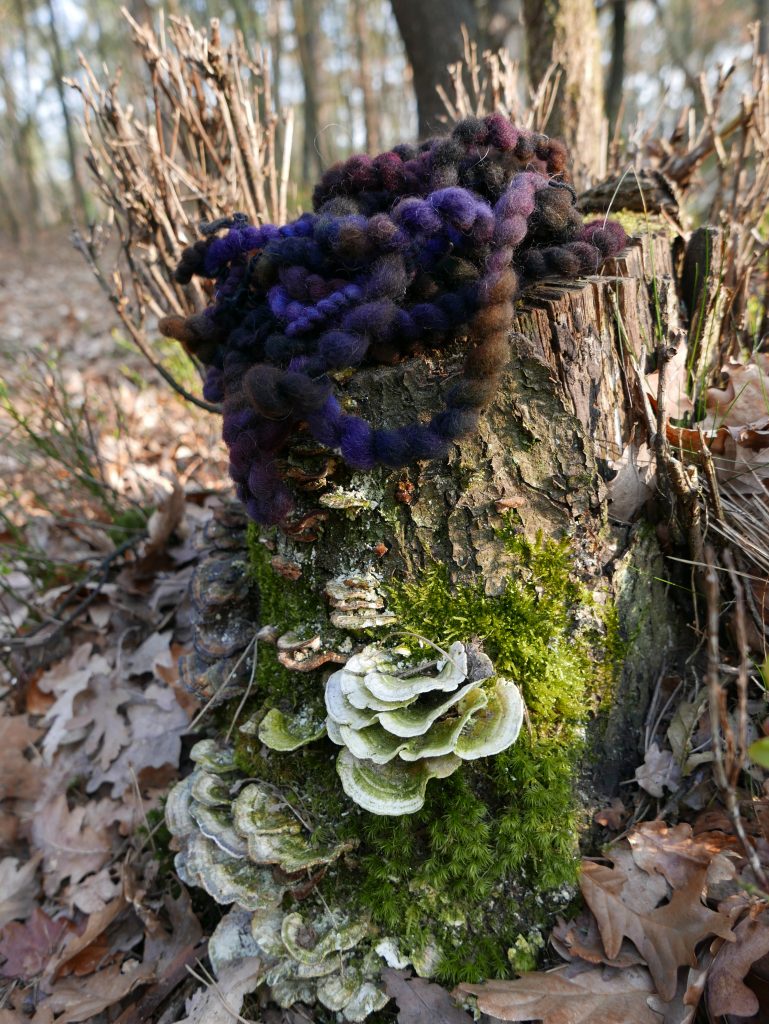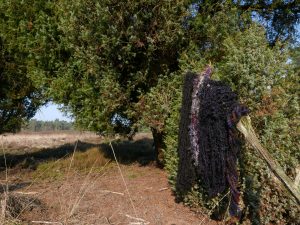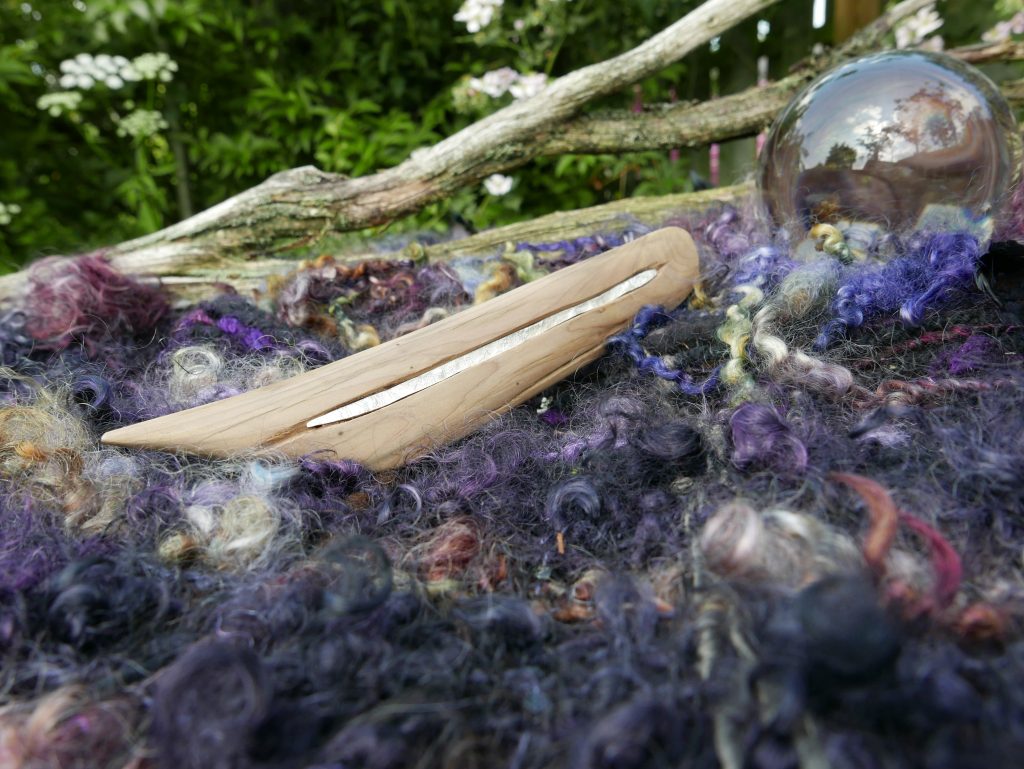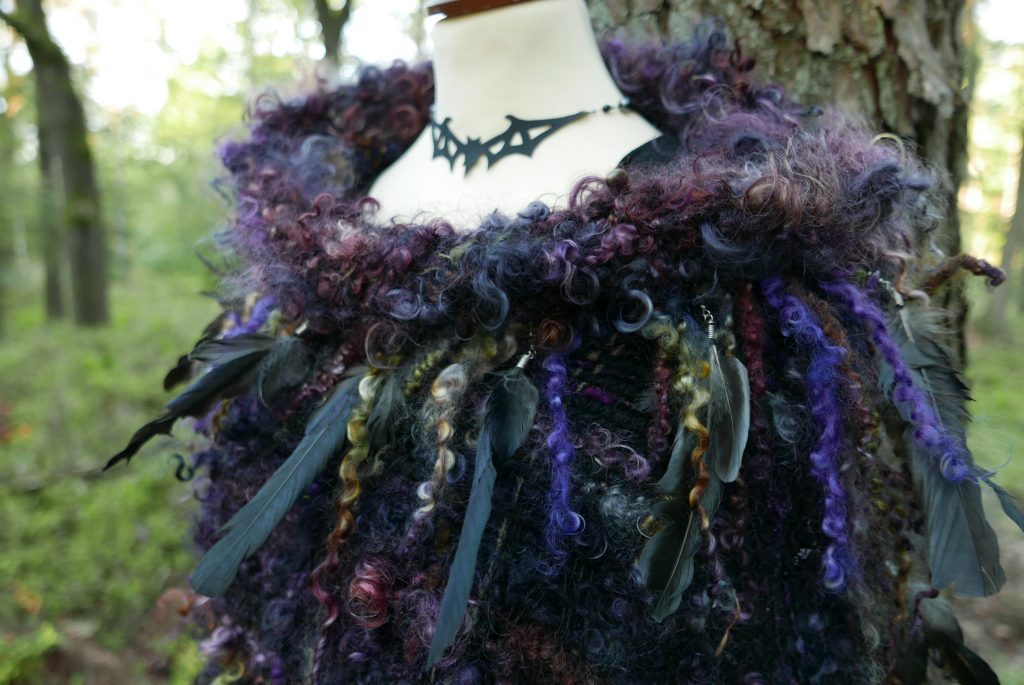Witchcraft or Coincidence..?
In this blogpost we welcome back Ineke de Brouwer, of ‘Tricky Thread’ in the Netherlands, with a delightful follow-up to her article in Issue 12 in which we featured her stunning ‘Juniper’ Shawl. We love to share in these behind-the-scenes with artists, and it is inspirational to see how Ineke works through the ideas, themes, and constructions to create her gorgeous fibery artworks!
The story behind the shawl
by Ineke De Brouwer
The moment I heard about the ‘the dark side’ theme for Issue 12, the idea for the scarf ‘Juniper’ immediately arose. Finally, an opportunity to do something with the black “spelsau” fur I had been saving for an extraordinary project. The dual structure of the fur reminds me of wild nature and terrible weather conditions, as well as enchanting landscapes and magical creatures.
Legendary creatures have always captured my imagination, for example: Witches, wizards, magical healers and sorcerers. Since I am a bit of a scaredy cat, I prefer stories about Witchcraft and Wizardry which are intended for the practice of good magic, rather than evil. Like the Dorans in the Monica Furlong* books. Juniper, the main character in Furlongs books, must learn how to spin, dye with plants, and weave, for the purpose of making a protective Doran cape. This process is described fairly accurately and is very inspiring. Quotation: “When I took up the spindle, I felt as if the thread was flowing not just from the puff of wool hanging over my left shoulder, but through my arm and indeed through my whole body. For the first time the thread was perfectly even.”
Spinning a perfectly even thread is not my specific expertise, I’m more of an art yarn spinner, but I do recognize the feeling of becoming one with your thread and your work, as well as the fulfilment of spinning high-quality material into a good stable thread.
After finding inspiration, you need to turn it into a project. An important step in turning your inspiration into a project is selecting and organizing material. Choosing the right colours, structures and additional objects are prerequisites for a successful project. Issue 8 of TinyStudio Magazine has an article I wrote on selecting colours. Information on texture and structure can be found in Issue 11.
Objects can give a certain atmosphere or appearance to a design. Importantly, these objects do justice to your artwork, but are not so conspicuous as to overshadow the original design. Objects should be relevant to the theme, and add something to the look and feel.
For the Juniper project, I was convinced that rook feathers should be added to the shawl. These were to give the shawl a nature-based, magical appearance. Living in a rural area, finding feathers doesn’t have to be a big problem. There is a large rookery at the end of my street. On a sunny spring day I walked to the rookery to look for feathers. There were lots to be found, but they were not nice enough for my project. The birds lose the feathers twice a year because the feathers are in a bad condition, so naturally they were not in great shape.
While I was still thinking about the bird feather problem, I had an appointment with the silversmith.
I have developed an interest in designing and making my own shawl pins. Some knowledge of silversmithing is very useful.
The silversmith lives in the floodplains, an area rich in birds. After hard work and learning, the silversmith and I struck up a conversation over lunch. I talked about my next project and the desire to add rook feathers to my shawl. To my surprise, he noted that he had found a dead rook in his yard that very morning. Coincidence or…
Interesting, but a complete dead rook is a bit different than picking up a few feathers from the grass. What to do with a dead rook. Fortunately, the internet provided a solution. I was forced to study the cleaning and conservation of feathers. I learned a lot that day. I’m still not quite convinced that I wanted to have that knowledge about plucking and preserving bird feathers! Long story short, the feathers are preserved, set in a metal wire setting and attached to the shawl with semi-precious stones.
I think the feathers provide an enchanting look, and have helped to capture the atmosphere of the book ‘Juniper’.
If you want to know more about making the Juniper scarf, a video has been posted on my website. https://www.trickythread.com/videos
*Monica Furlong (1930-2003) grew up in London and studied philosophy and theology. She worked as a journalist for the Daily Mail and then became a religious program producer for the BBC. In 1978 she decided to devote herself completely to writing books. She has written many adult books, both fiction and non-fiction. Monica Furlong’s interests include deserts, hermits, magic, psychoanalysis and feminism. In connection with these interests, she visited various deserts and explored the cultures there and traveled to Australia to learn more about the Aboriginal people. For children, she wrote Wise Child and Juniper A Year and a Day and Colman.
